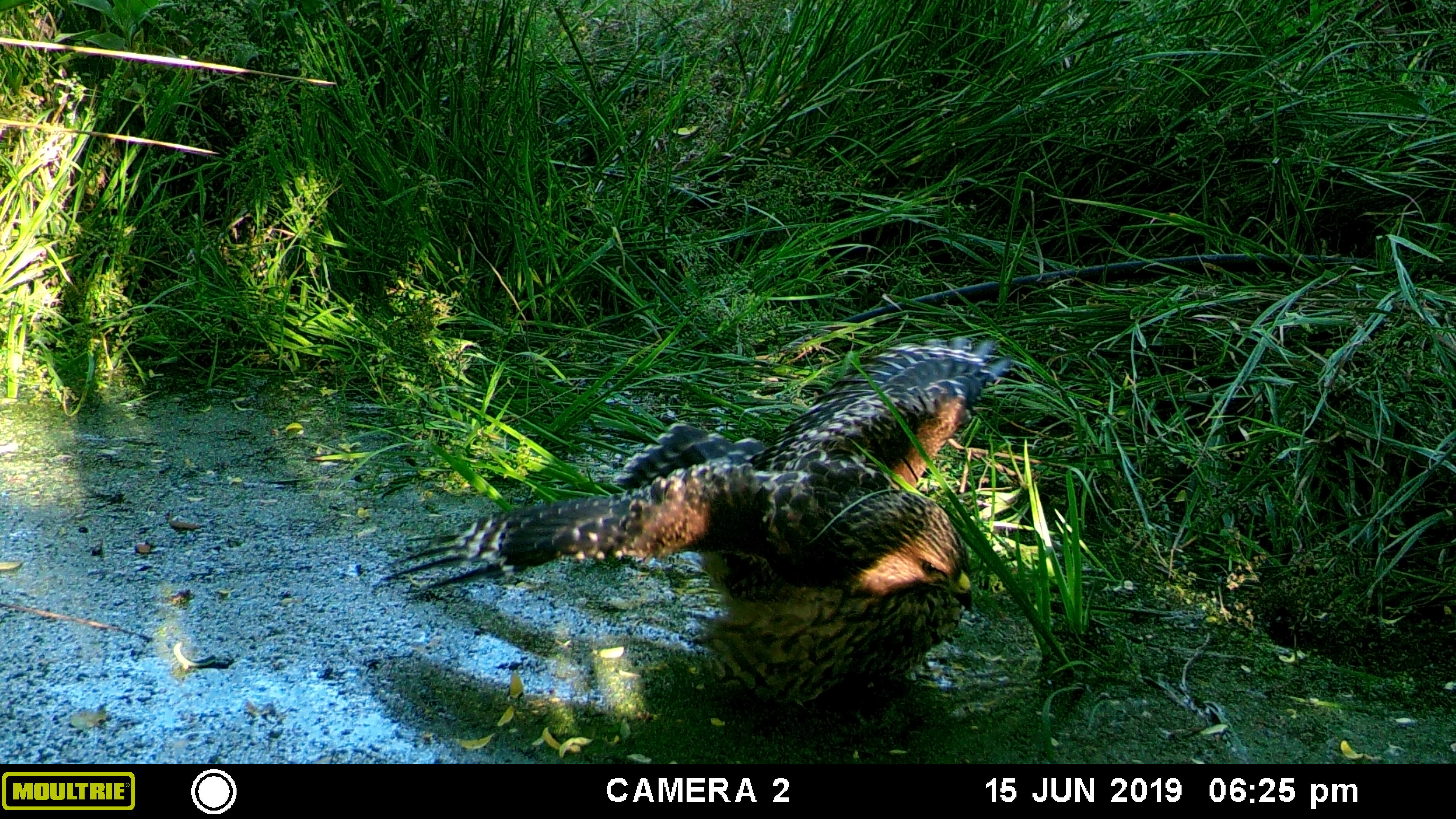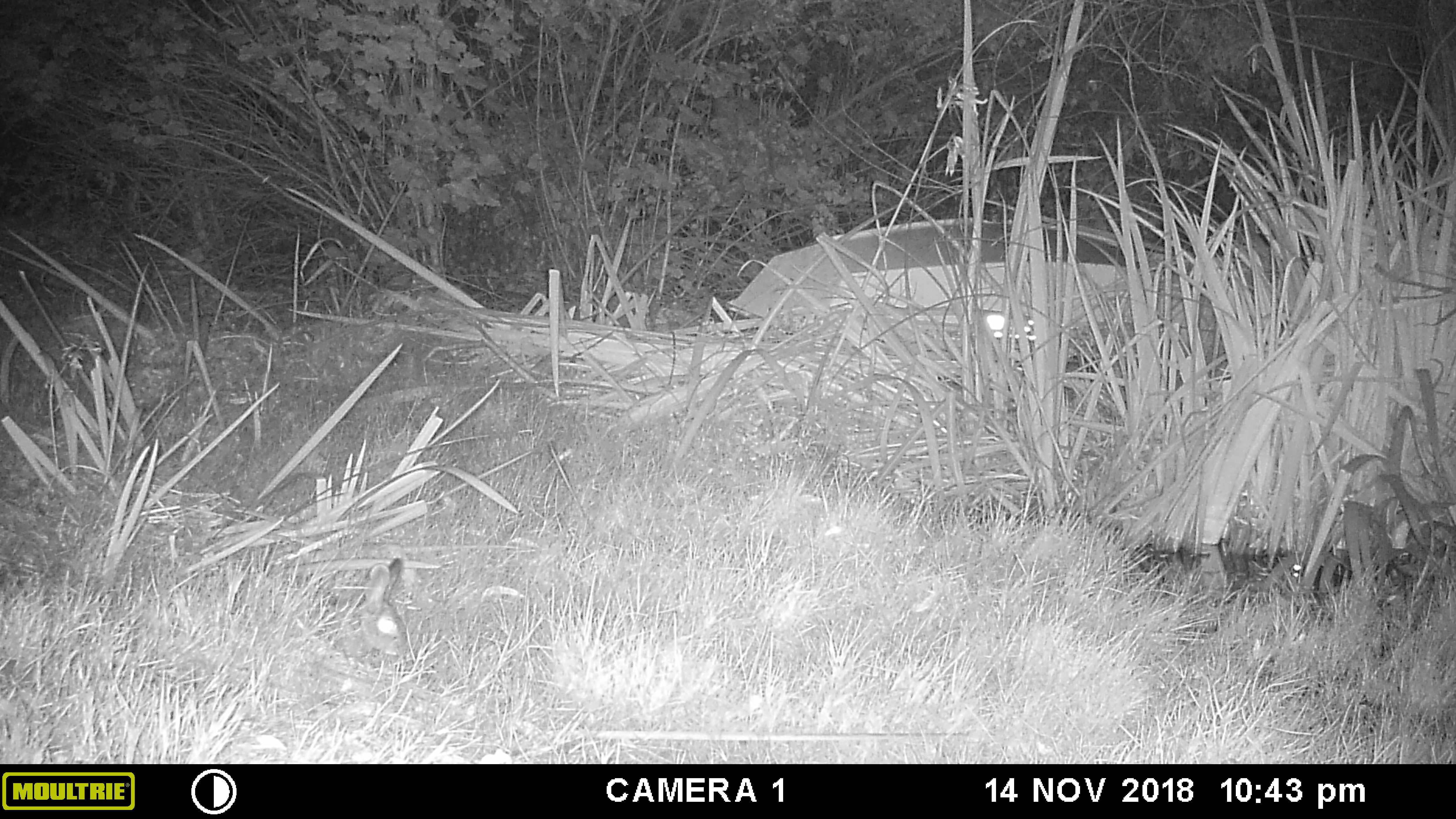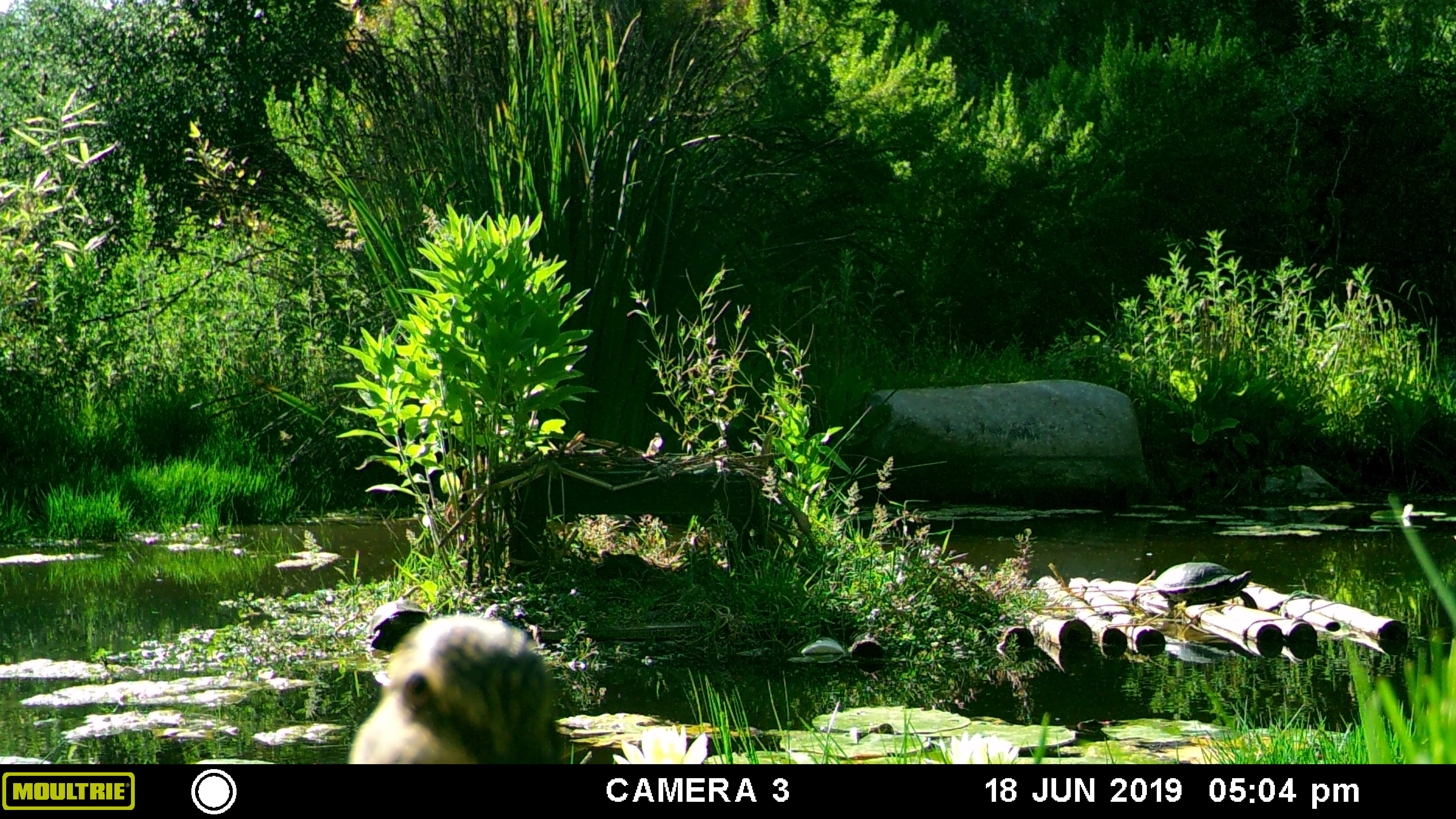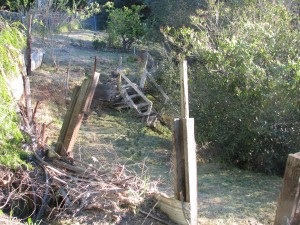-
First Trees Planted!

Fruit trees ready for planting. Hello! I’m endeavoring to update daily. So much is going on! My existing pond has been filled with Pacific Chorus Frogs doing their part in both maintaining their noisy reputation and continuing their gene pool. Lots of spawn! I can’t clean out the algae until they’ve hatched and metamorphed into frogs, otherwise the mosquito fish will get them.
Anyway, the above photo is of the beginning nursery, where I’ve potted up many bareroot fruit trees and vines so that they are ready to plant. Its at the end of bareroot season here in San Diego, although its the beginning of it elsewhere. Pecans and almonds will be available in May.

A future covered walkway. How exciting is this? I’ve always envied the walkways where the trees grow together overhead, and voila! I have one! A Liquidamber Pathway. Did you know that Liquidamber styraciflua, or Sweetgum, comes in a variety of Fall colors? From dark red to lightest of yellow. What a beautiful Autumn it will be!
Tomorrow rain is predicted with heavy showers on Saturday and temperatures down to the low 20’s. Here in Southern California that spells trouble for our citrus and avocado crops, and all our frost-tender ornamentals. Perhaps on one of the rain days I’ll tell my very creepy waterlily story. Waterlilys creepy? Ohhhh yeahhhhh.
-
Weeks Two and Three
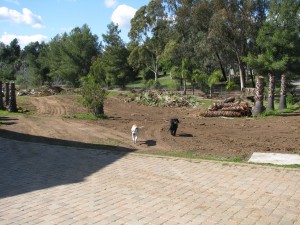
My dogs are enjoying all the changes in the yard. The palms have been cut down or pulled out with a tractor, including their immense root balls. Although I hate killing anything, I’m not sad to see these go. After all, all parts of them will be used back into the landscape: the fronds as backfill to help keep the lower hillside from eroding, the trunks and roots to build the swales. Some of the trunks have been cut to ten feet, and will remain as pillers for a covered walkway or as trellises for heirloom roses and fruiting vines. Some trunks have found new homes as stairs!
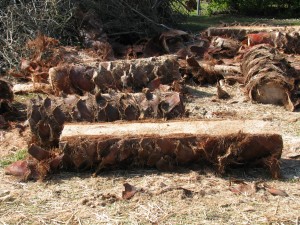
Palms are trimmed to lie flat 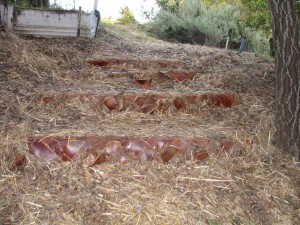
The cut palms create natural stairs. Everything that can be reused back into the project has been separated out. The yard might temporarily look like a junk heap to some, but it actually contains piles of potential. Permaculture is all about recycling, using locally and being creative.

Non-native jade plant is used in planting. The mounds of jade that covered the hillside, blocking out the growth potential for native plants which will replace it, have been chopped up and thrown into the holes for trees. The plant material will hold and release water and nutrients as it decomposes, and won’t sprout because its buried so deeply.
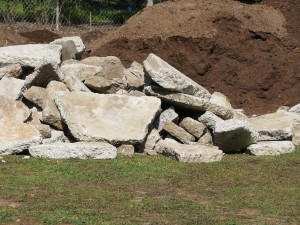
Chunks of cement are building blocks. Roger Boddaert, the Landscape Architect in charge of this project, is always on the lookout for free usable materials. He spotted piles of broken cement and hauled them over for use as walkways, retaining areas, and anything that inspires him! The heap behind the cement is mushroom compost, hauled free from the local shiitake mushroom farm. Also in fragrant mounds is urea from the local waste and recycling plant. Urea is the solids left from treating waste water, and as it is not ‘hot’, can be used right away to amend planting soil. In this way, all of the community who are on septic have contributed to this project! 🙂
-
Week One

The green looks pretty, but its all weeds that need to be mowed every few weeks, and palm fronds that must be cut in accordance with fire restrictions. A watershed. A streambed is below the property. All that green looks gorgeous, but it is foxtail, Russian tumbleweed, and other invasive non-natives that produce seeds that harm not only my dogs, but any wild animals that get into them. Foxtails ( Alopecurus ) were introduced into California by the Spaniards as graze for cattle, and quickly took over, and the pointy seeds hurt and kill many animals every year. Mowing is not only time-consuming but polluting. The Washingtonia palms grow like weeds and are-invasive in streambeds. These were planted by the previous owner. (No, I don’t know what he was thinking. He pulled out a lime grove to plant them.) Since the fronds are so flammable, in this fire zone all dry fronds must be pruned off, which is expensive and painful (thorns!). I am keeping a couple of these palms on the lower end of the property because orioles love to nest in them, and so do raccoons. The rest will be cut and used back into the design of the property.

These sheds must come down. Sheds that had been put up by the previous owner out of scrap pieces are slowly coming down on their own. Since I don’t want to be inside when they do, the sheds must be taken down and replaced. Everything that can be reused into the garden structure will be saved. The raised veggie beds have been an ongoing project of mine for years; these are lined on the bottom with aviary wire to prevent little gopher friends from dining.
Jury-rigged retaining walls made out of scrap lumber, wire fencing and corrigated aluminum had been installed by the previous owner and held up for years. Recycling:great. Unsightly: yes. Dangerous: ohhh yeahhh. Some areas have been giving way during recent floods when the upper property funneled the neighborhood water down through this to the streambed below. Non-native jade plant (Crassula ovata) grows all over one section, which helps hold the embankment but also prevents natives from re-seeding.
The project begins!
-
The Inspiration
After twelve years of working full time and part time, raising two children on my own, rescuing animals, living vegetarian and as organic as I could afford, I reached a point in my life last year where everything changed. I quit my job, came to terms with living alone for the first time, and tried to find out what the last quarter of my life would embrace. Just as in nature, the answer was close by. It was my property, a watershed filled with Washingtonia palm trees (unsellable and fire hazards). Every year here in San Diego county, the rains come and all the neighborhood water funnels through my property down to a shallow stream below. Tons of water pass by my house. The rest of the year we bake and dry out, and I pay for irrigation water. In researching how to keep that precious rainwater, I discovered permaculture. Although I’d heard the term permaculture, I only vaguely knew what it meant. Have you ever discovered something that makes so much sense and makes your life so much better that you are amazed that you lived so long without discovering it? Yep, me too. That’s what happened this time. Permaculture is a wholistic means of living naturally where you no longer live in competition with nature, but as a part of it. By creating swales, rain catchment ponds and spongy rain-absorbing loam water is retained in your property. Creating plant guilds, edible forest gardens (even the term makes my foodie soul sing!), and natural greywater filtration, can all be done by everyone wherever they live without a great deal of expense. The term permaculture was coined by Australians Bill Mollison and David Holmgren in the 1970’s. It incorporates many of the practices I’ve already done in my life: organic veggies, the slow-food movement, raising chickens (for eggs and manure), beekeeping, planting bird and butterfly attracting plants, and no-till gardening. So I said to myself, “Duh!” (envision me smacking my head with my open palm). I can do this, I have the resources, and what better healthy, exciting path could I choose for myself? I asked a friend, landscape architect and activist Roger Boddaert to help me on this project, and together we’ve started down this exciting path of learning and creating. Roger is an overflowing well of information, inspiration and ideas, and envisions turning this adventure outwards to educate everyone we can about permaculture. This part of my blog is the progress on my land as we get the basics down. Thanks for walking the path with us!
